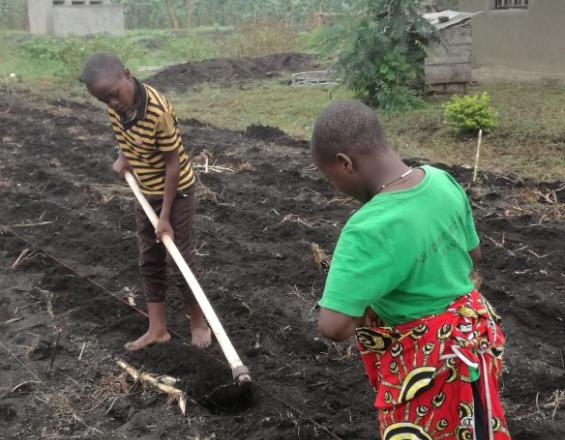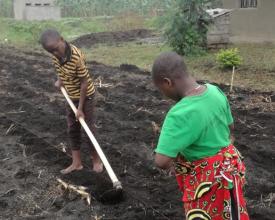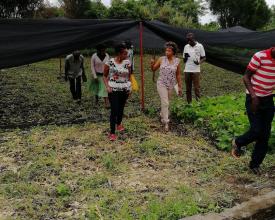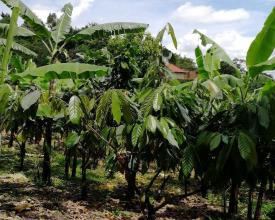
Desarrollo de aptitudes agroforestales para atajar la deforestación y mejorar los medios de subsistencia de los agricultores en Uganda

Fairventures apoya a tres escuelas de formación profesional del oeste de Uganda para que desarrollen y pongan en práctica cursos de agroforestería. Los alumnos aprenden cómo pueden prosperar plantando árboles mezclados con otras plantas en sistemas agroforestales y cómo pueden preservar y mejorar la calidad del suelo. Junto con el desarrollo del módulo de formación, las escuelas reciben apoyo para establecer viveros y campos de demostración, por lo que también pueden llevar a cabo formaciones prácticas y apoyar a sus alumnos con plantones, herramientas y consultas orientadas a la práctica. Además, los agricultores se ponen en contacto con los procesadores de madera que acabarán comprándoles la madera. Fairventures colabora con las industrias locales para desarrollar productos madereros innovadores y salvaguardar los mercados para la madera de reforestación.
Impactos
Los estudiantes bien formados y con el apoyo de sus escuelas podrán obtener ingresos sostenibles de la agrosilvicultura, actuar como multiplicadores y contribuir al mismo tiempo a la reforestación de Uganda. Las capacidades de los estudiantes y la infraestructura preparada en las escuelas sirven de base para la transformación de la agricultura insostenible en agroforestería en Uganda occidental.
Los beneficios de la agrosilvicultura para estos futuros agricultores son múltiples: sobre todo, la agrosilvicultura es una forma de mejorar el rendimiento de cierta superficie mediante la combinación de múltiples especies vegetales. También es una forma relativamente barata de mantener la fertilidad del suelo, combatir la erosión y mitigar los efectos del cambio climático. En conjunto, estos aspectos permiten a los agricultores establecer un medio de vida sostenible a través de la agricultura. Los propios árboles actúan como una inversión a medio plazo que impulsará a los agricultores a un nuevo nivel de ingresos tras la cosecha. Los troncos pueden venderse a la incipiente industria maderera de Uganda, mientras que las ramas y los residuos de madera pueden servir como leña y las hojas y pequeñas ramitas pueden utilizarse como abono verde para fertilizar la zona.
Así, la solución contribuye a la gestión sostenible de los recursos naturales en Uganda y ofrece una oportunidad de ingresos a las comunidades rurales.




